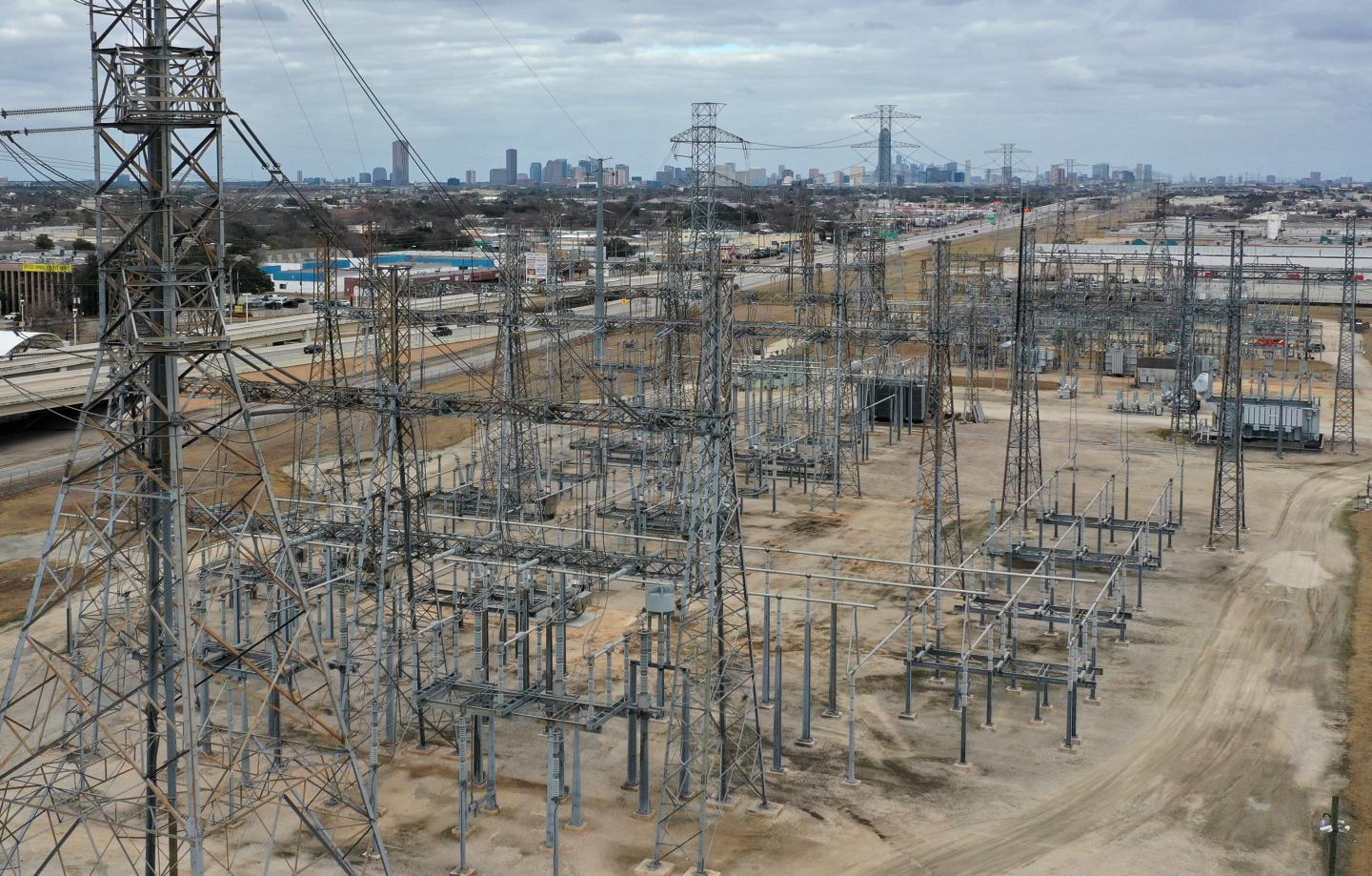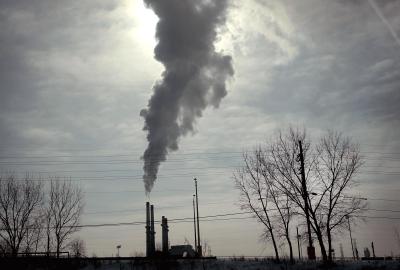Why you’re paying more for electricity
A new congressional report found that electricity bills have increased in 47 states in the last year, with consumers in 10 states paying at least 10% more for electricity. The report projects that, on average, American households will pay approximately $100 more per household in electricity costs this year. Residential electricity prices are also on track to reach a 10-year high in 2026.
There are many reasons why electricity prices are on the rise, from increasing electricity demand from data centers and manufacturing, to the Trump administration blocking solar and wind power, which are often cheaper than coal or fossil gas.
And another factor is also quietly jacking up your bill — climate change.
“The way climate change impacts electricity prices can be different in different parts of the country,” says Ted Kelly, who directs the U.S. clean energy program at the nonprofit Environmental Defense Fund. “But no matter where you live, you’re paying a hefty price.”
Clean energy can keep costs down if the Trump administration lets it
Solar power, wind power and battery storage hold electric prices down, says Kelly, because building new wind and solar is generally cheaper than building new gas, coal and nuclear power facilities. Plus, “there are no fuel costs,” Kelly says.
The Trump administration, which campaigned on a promise to reduce consumers’ energy bills by half, has yet to deliver.
"The cheapest energy today is also the cleanest and fastest to deploy, and that’s what America needs," says Joanna Slaney, EDF's vice president of political and government affairs. “Instead, the Trump administration's hundreds of millions in subsidies for old, unreliable coal plants will drive up electricity bills even higher.”
Environmental news that matters, straight to your inbox
Customers in 11 Midwestern states, for instance, will be footing the $80 million bill for the Trump administration’s order to keep Michigan’s J.H. Campbell power plant running past its scheduled retirement in May 2025. State and regional grid officials had planned for the closure and had secured a plentiful supply of cleaner, less expensive electricity. Every day the plant stays open costs $600,000.
At a time when demands on the electric grid are growing, clean energy is also much quicker to deploy. When the supply is abundant, the price of electricity is lower. Biden-era rules are also cutting down the time it takes to connect solar and wind farms to the grid. Those are two reasons why almost 95% of new electric power installed in the U.S. last year was clean energy — solar, wind and battery storage.
By contrast, utilities that want to buy new gas turbines are finding they won’t be ready until the early 2030s, because of a shortage of manufacturing facilities. New nuclear facilities take at least five years to build and often far longer.
A new report shows that the administration’s energy policies threaten half the new electricity planned in the country, putting supplies for 16 million people across 44 states at risk.
Weather disasters are driving up electric bills
Costly weather disasters, made more frequent and intense by planet-warming pollution, are also a factor behind high electric bills. To pay for repairs and to bolster the system so that it’s better prepared in the future, utility customers get charged more.
“Something like a third of capital investment that utilities have been making recently has been for that kind of hardening and resilience,” says Matthias Fripp, director of global policy research at the think tank Energy Innovation, with a proviso: Many utilities make their profits by investing in grid improvements. “It’s not clear how well that [amount] maps onto climate change versus utilities liking to invest in improvements. But, clearly, there’s some need for this.”

Consider Hurricane Helene, which plowed through the southern Appalachians in September 2024, killing more than 230 people, spawning at least 20 tornadoes and causing huge amounts of flooding. North Carolina’s Office of State Budget and Management projected the cost of repairs to the state’s electric system, paid for by everyday consumers, will total $1.4 billion.
Drought, which is also intensified by climate change, impacts electric prices as well, for a couple of reasons. The first is that hydroelectric power, one of the cheaper forms of electricity in the U.S., relies in a significant way on rain and melting snow. When there’s not enough rain or snow melt, hydroelectric power plants have to dial back their production. The gap is then filled by more expensive power plants.
The second reason is that fossil fuel and nuclear power plants rely on fresh water for the cooling process that is essential to their operation. When the bodies of water they rely on dry up, once again power production has to shift to more expensive sources. “When high demand is combined with limited supply,” Kelly says, “that’s when prices spike and brownouts become more likely.”
Wildfires increase electricity costs

Here’s another reason for high electric bills, especially in the western U.S. — wildfire risk. In 2018, a 100-year-old transmission line operated by the California utility PG&E sparked the Camp Fire. Dry conditions that were abetted by climate change helped make that fire the deadliest in the state’s history.
After being hit by lawsuits related to the Camp Fire, PG&E was forced to declare bankruptcy. Now, power companies in the arid West are employing extremely expensive measures to reduce risk and potential liability. PG&E, for instance, is burying more than 1,000 miles of power lines in high-risk areas — an effort that can cost between $3.4 million and $6.1 million a mile — costs that consumers, not the utility itself, are paying.
“Wildfire-related costs make up as much as 24% of increased utility rates these days in California alone,” says Kelly, citing a report by the state’s Public Advocates Office.
- Fighting wildfires with fire: Can prescribed burns save our forests?
- A new firefighter launches into space
Extreme heat and cold increase demand for electricity
The buildup of greenhouse gases in the atmosphere has caused the last 10 years to become the 10 hottest years on record. Across the country, people are using more electricity to cool down.
That excess heat is one of the reasons every single person in Texas paid an extra $80 on their electric bill in 2023 compared to 1980, says Texas A&M geosciences professor Andrew Dessler. He is the author of a new study that teases out the impacts of climate change on electric prices in the Lone Star State.

“This is a climate tax we’re all paying,” he says of Texans’ increased bills. “But unlike government taxation that funds public services voters value — like national defense, parks, or deficit reduction — this climate burden provides no benefits to citizens.”
Extreme temperatures are, however, only part of the story. The vast majority of utility customers pay not just for the electricity they use but also for building out and maintaining power plants, transformers and electric lines — what’s generally known as “the grid.”
Blackouts and brownouts occur when people want to use more electricity, typically for cooling but also heating, than the system can supply at a given moment — when it’s 110 degrees in Reno or only 8 degrees in Dallas in February. To prevent that, the electric system needs to be built to accommodate those demand peaks — extra infrastructure that isn’t needed or used most of the time. “Something like 50% or more of the total cost of the system is meeting the very peak demand,” Kelly says. “And because peak demand is higher because of climate change, there’s a lot more money that needs to be spent.”
Moreover, when utilities build new power plants just to cover those moments of high demand, they have a very small window to recover costs. For instance, a $100 million power plant that’s used only 20 days a year needs to charge a lot for the electricity it sells when it operates. Those costs end up on your electric bill.
So do the costs of an electric grid ill-prepared to meet the demands of the current climate-changed world, where temperature extremes are disrupting established weather patterns and the infrastructure designed around them. After 2021’s Winter Storm Uri, when gas- and coal-fired power plants shut down in frigid temperatures and strained the grid, one San Antonio veteran living on Social Security received an electric bill totaling $16,752. He was among many receiving a bill in the thousands.
- Clean energy and EV tax credits are disappearing, but not gone yet. How you can still save money
- Meet 3 people who saved more than $1,000 a year with solar
“Unfortunately, we can’t change the way climate change has already impacted folks’ electric bills across the U.S.,” says Kelly. "Some of those damages are now already baked into the system. But if we want to think about the future and how we can reduce costs, we’ll pursue cheaper, cleaner renewable energy and leave fossil fuels in the past.”


